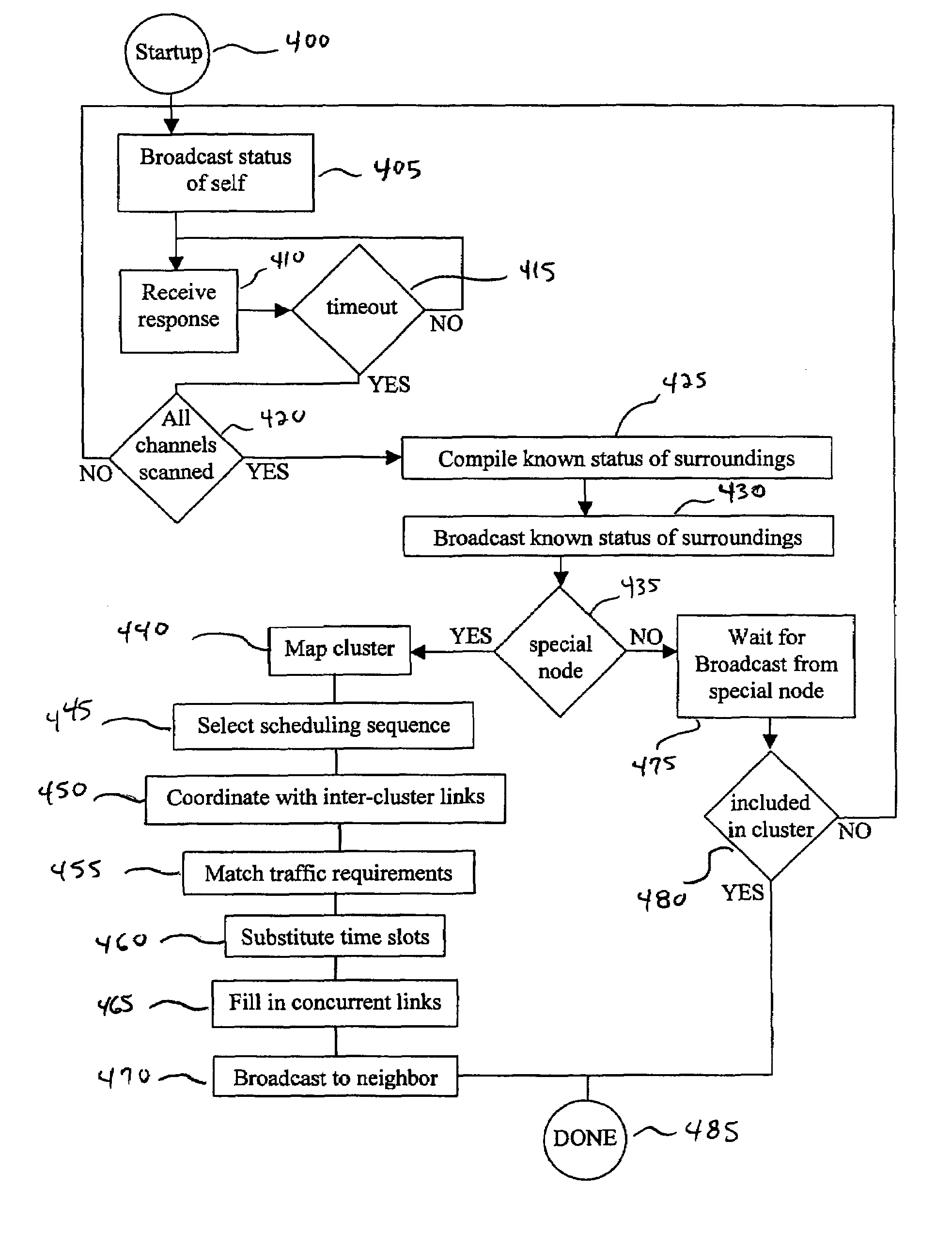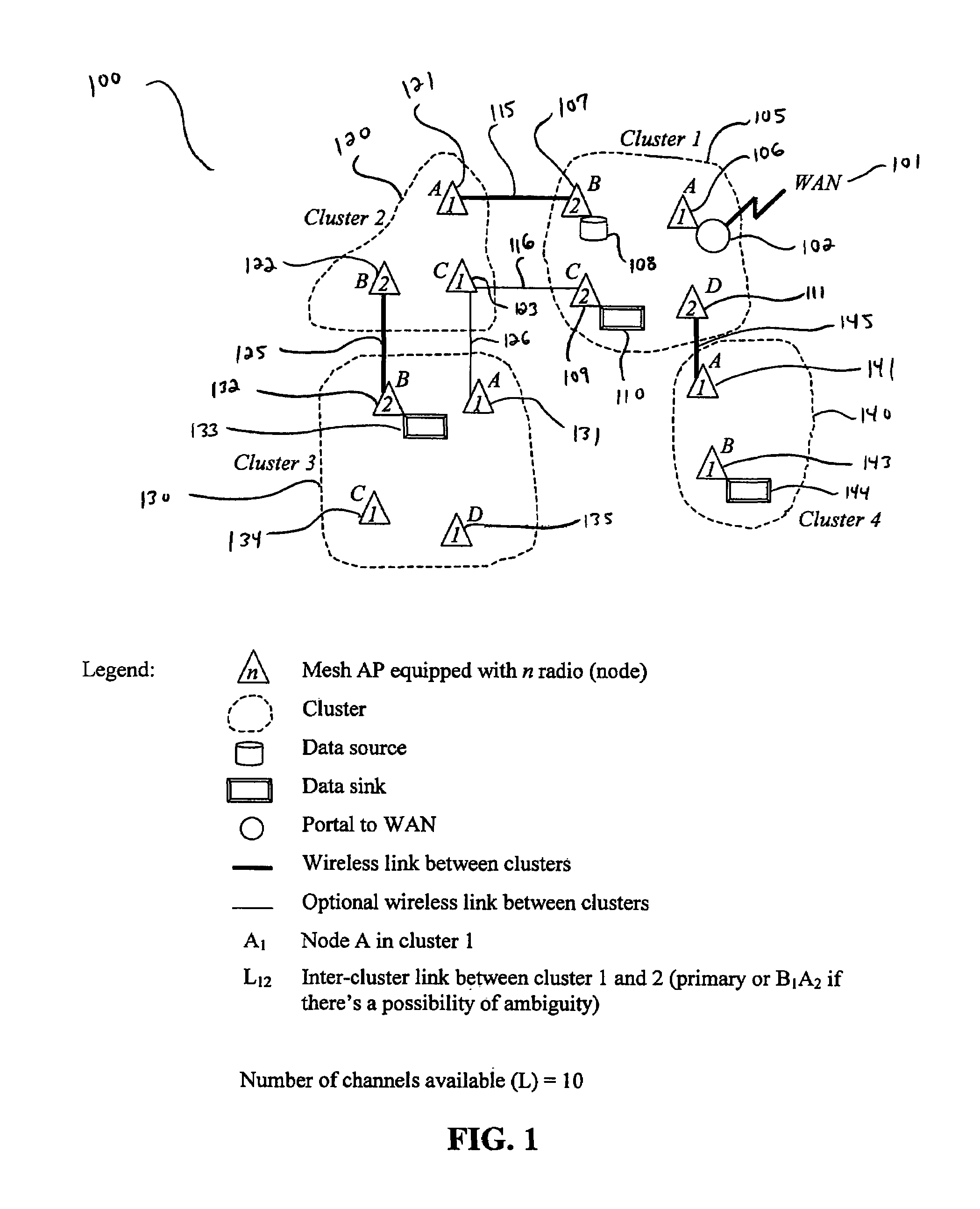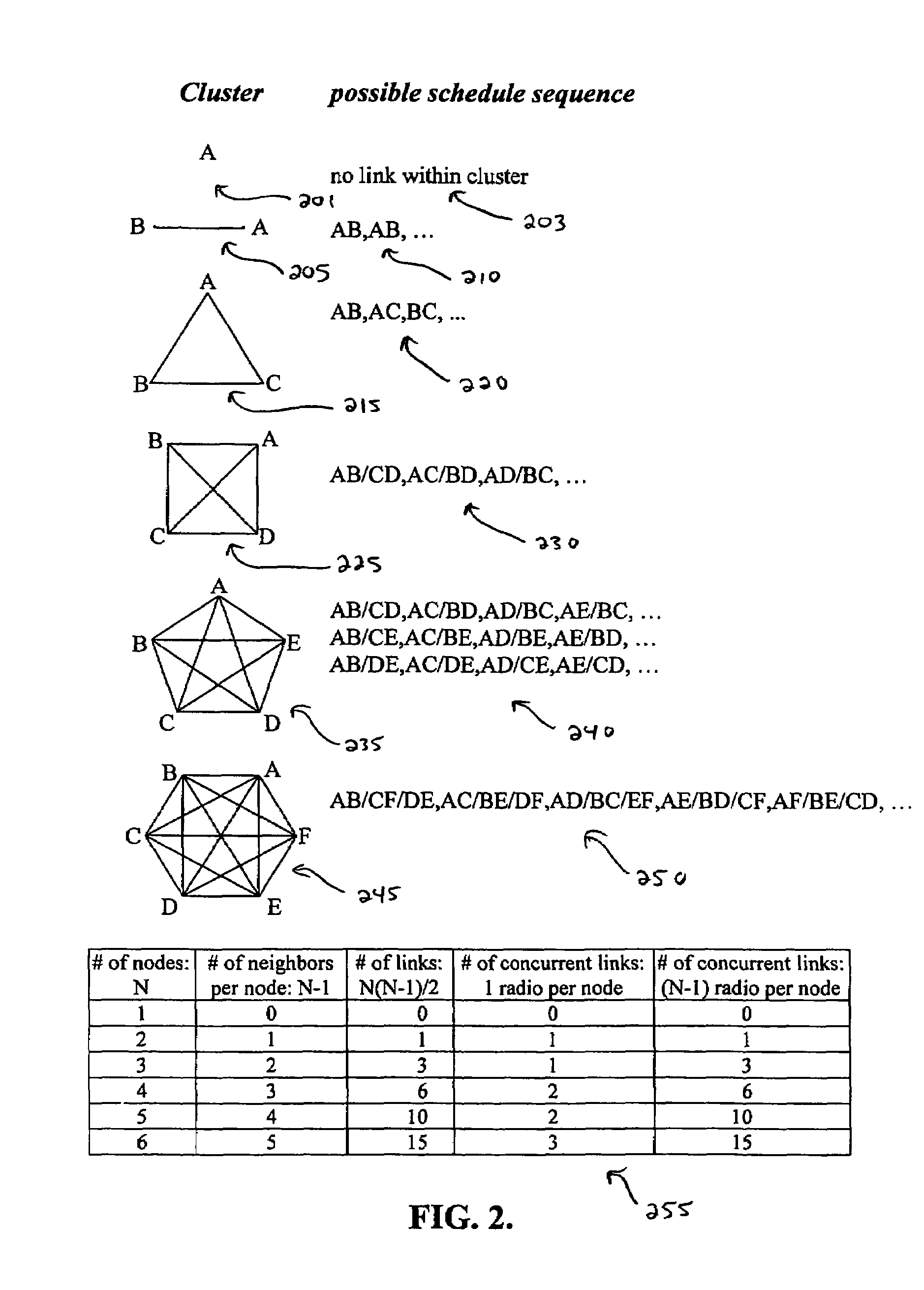Self-organizing multi-channel mesh network
a mesh network and self-organization technology, applied in the field of communication systems, can solve the problems of severely restricting the applicability of the proposed mac protocol, and affecting the applicability of a wider range of network types, so as to improve the efficiency of the transmission protocol over the communication channel between any pair of directly connected nodes
- Summary
- Abstract
- Description
- Claims
- Application Information
AI Technical Summary
Benefits of technology
Problems solved by technology
Method used
Image
Examples
Embodiment Construction
[0059]As required, detailed embodiments of the present invention are disclosed herein; however, it is to be understood that the disclosed embodiments are merely exemplary of the invention, which can be embodied in many forms.
[0060]FIG. 1 is a system layout in which a preferred embodiment of the present invention may operate. A mesh network can be installed either on a permanent or a temporary basis. In certain situations, some of the nodes can be transient either due to its movement, failure or maintenance. Because of this possible change to the system, the configuration process is executed when change occurs in addition to configuration occurring at initial system startup. However, instead of configuring these nodes manually, it is desirable to have these nodes perform automatic configuration.
[0061]FIG. 1 illustrates a system layout of a preferred embodiment of the present invention. System 100 contains 4 clusters. Clusters can be added or subtracted depending on the system configu...
PUM
 Login to View More
Login to View More Abstract
Description
Claims
Application Information
 Login to View More
Login to View More - R&D
- Intellectual Property
- Life Sciences
- Materials
- Tech Scout
- Unparalleled Data Quality
- Higher Quality Content
- 60% Fewer Hallucinations
Browse by: Latest US Patents, China's latest patents, Technical Efficacy Thesaurus, Application Domain, Technology Topic, Popular Technical Reports.
© 2025 PatSnap. All rights reserved.Legal|Privacy policy|Modern Slavery Act Transparency Statement|Sitemap|About US| Contact US: help@patsnap.com



